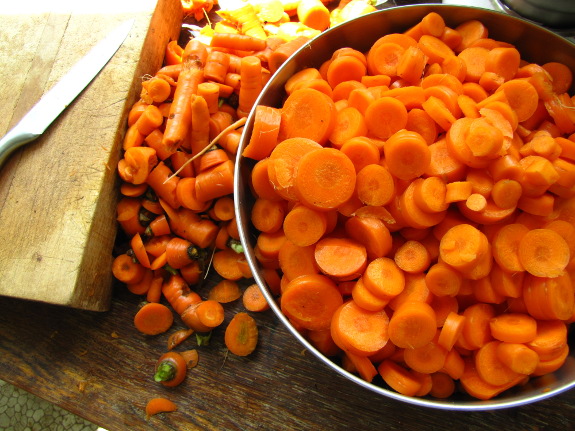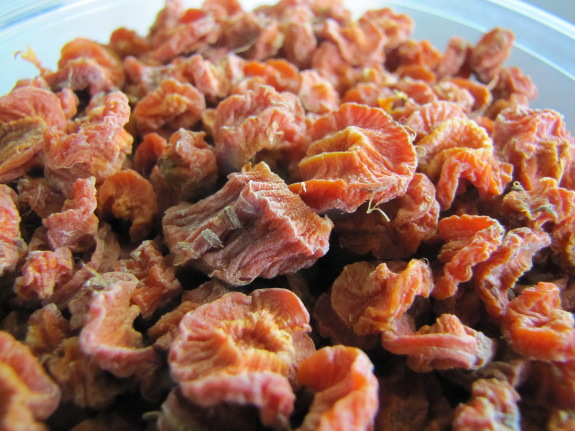
Growing enough food

Part of Brandy's
question that I
didn't entirely answer alluded to her concern that she'd have to budget
for buying vegetables at the grocery store if the crops in her
hypothetical homestead failed. The trick to feeding yourself off
your own farm only (in one food group or in all of them) is to
diversify and grow more of each type of food than you think you can
eat. That way, if your eggplant gets decimated by flea beetles,
you'll still be wallowing in cucumbers and tomatoes.
Another facet, though,
is to learn to eat produce that isn't as pretty
as the stuff in the grocery store. For example, I made a mistake
and
left the spring carrots in the ground a month too long. In past
years,
this hasn't been much of a problem, but 100 plus degree heat followed
by weeks of rain meant that a third of the harvest had bits of rot here
and there.

The average American
would toss those subprime carrots in the compost pile (or the trash
can), but I instead cut them up, blanched them, and spread the root
rounds on our food
dehydrator
trays. It's simple to do a spot test of problematic veggies ---
cut off the part that's obviously bad and then taste what's left.
If your tongue says "yum!", the produce is good to eat or preserve, as
long as you do it right away.
Of course, if our farm
was more diversified, we could have given carrots to horses, cows,
goats, or pigs. Or, if I'd wanted to cook them up, we could have
fed them to our chickens. But my goal is generally to keep people
food for people as much as possible since we're still working the kinks
out of our own food production system. Hopefully these dried
carrots will come in handy for winter soups when the rest of the
harvest is long gone. Plus, eight pounds turned into two cups,
which definitely helped with the storage
issue!
Want more in-depth information? Browse through our books.
Or explore more posts by date or by subject.
About us: Anna Hess and Mark Hamilton spent over a decade living self-sufficiently in the mountains of Virginia before moving north to start over from scratch in the foothills of Ohio. They've experimented with permaculture, no-till gardening, trailersteading, home-based microbusinesses and much more, writing about their adventures in both blogs and books.
Want to be notified when new comments are posted on this page? Click on the RSS button after you add a comment to subscribe to the comment feed, or simply check the box beside "email replies to me" while writing your comment.
- Remove comment

- Remove comment
- Remove comment
